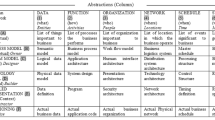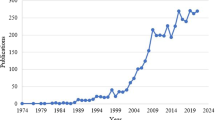Abstract
Natural entities are sources of inspiration for designers as they exhibit nature's unique and novel strategies and help them design products. For understanding and abstracting principles from nature, the knowledge of a biological entity is a must. Knowledge capture and representation in bio-inspired design is a complex process. Firstly, the biological entities are documented in different places such as books, articles, blogs, etc. A designer might need to spend considerable time while shuffling through these documents without coming to any conclusion. Secondly, biological knowledge is intricate and from a different domain. This complexity at the entity level and retrieving captured knowledge can lead to confusion and frustration. Thirdly, the roles of various stakeholders are not clearly defined. Hence, the knowledge collection, compilation, usage, and representation process are vague. We provide an organizational approach to represent bio-inspired design knowledge collection, compilation, and usage and representation process using the Zachman framework. Zachman framework provides the descriptive representation of enterprise architecture, uses six primitives, and can handle complex systems. In this research, we understand and apply the Zachman framework to capture and represent bio-inspired design knowledge with an organizational viewpoint. This research aims to organize and represent captured knowledge transfer, building, and representing processes and making it readily available for designers who can use it to make design decisions.
Access this chapter
Tax calculation will be finalised at checkout
Purchases are for personal use only
Similar content being viewed by others
References
Chandrasegaran, S.K., Ramani, K., Sriram, R.D., et al.: The evolution, challenges, and future of knowledge representation in product design systems. Comput.-Aided Des. 45, 204–228 (2013). https://doi.org/10.1016/j.cad.2012.08.006
Salgueiredo, C.F.: Modeling Biological Inspiration for Innovative Design (2013)
Chiu, M.-L.: An organizational view of design communication in design collaboration. Des. Stud. 23, 187–210 (2002). https://doi.org/10.1016/S0142-694X(01)00019-9
Farazmand, E., Moeini, A.: A framework for knowledge management architecture. In: Proceedings of the 13th International Conference on Enterprise Information Systems. SciTePress - Science and and Technology Publications, Beijing, China, pp. 425–430 (2011)
Crowston, K.: A coordination theory approach to organizational process design. Organ. Sci. 8, 157–175 (1997). https://doi.org/10.1287/orsc.8.2.157
Liles, D.H., Presley, A.R. (1996). Enterprise modeling within an enterprise engineering framework. In: Proceedings of the 28th conference on Winter simulation—WSC ’96. ACM Press, Coronado, California, United States, pp. 993–999
Jonker, C.M., Sharpanskykh, A., Treur, J., Pi, Y.: A framework for formal modeling and analysis of organizations. Appl. Intell. 27, 49–66 (2007). https://doi.org/10.1007/s10489-006-0030-2
Gualtieri, A., Ruffolo, M.: An ontology-based framework for representing organizational knowledge. In: Proceedings of I-KNOW ’05. Graz, Austria, pp. 71–78 (2005)
Pereira, D.C., Almeida, J.P.A.: Representing Organizational Structures in an Enterprise Architecture Language (2014)
Vernadat, F.: Enterprise Modeling and Integration: Principles and Applications. Chapman & Hall, London, New York (1996)
Vail, E.F.: Causal architecture: bringing the Zachman framework to life. Inf. Syst. Manag. 19, 8–19 (2002). https://doi.org/10.1201/1078/43201.19.3.20020601/37165.2
Morganwalp, J., Sage, A.: A system of systems focused enterprise architecture framework and an associated architecture development process. Inf.-Knowl.-Syst. Manag. 3, 87–105 (2002)
Noran, O.: An analysis of the Zachman framework for enterprise architecture from the GERAM perspective. Annu. Rev. Control. 27, 163–183 (2003). https://doi.org/10.1016/j.arcontrol.2003.09.002
Zachman, J.: The Framework for Enterprise Architecture: Background, Description and Utility. In: Zachman Int. https://www.zachman.com/resources/ea-articles-reference/327-the-framework-for-enterprise-architecture-background-description-and-utility-by-john-a-zachman(1996)
Pienimäki, T.: A Business Application Architecture Framework in Manufacturing Industry. Tampere University of Technology (2005)
Tatar, U., Karabacak, B., Katina, P.F., Igonor, A.: A Complex Structure Representation of the US Critical Infrastructure Protection Program Based on the Zachman Framework, p. 14
Dantu, B., Smith, E.: Medical process modeling with a hybrid system dynamics Zachman framework. Procedia Comput. Sci. 6, 76–81 (2011). https://doi.org/10.1016/j.procs.2011.08.016
Danny, J., Shanlunt, W.G., Alianto, H.: The application of Zachman framework in improving better decision making. In: 2018 Indonesian Association for Pattern Recognition International Conference (INAPR), pp. 245–249. IEEE, Jakarta, Indonesia (2018)
Mani, M., Uludag, S., Zolinski, C.: On evaluating the use of Zachman framework in computer science and information systems classes. J. Comput. Sci. Coll. 31, 9 (2015)
Abdullah, A., Zainab, A.N.: The digital library as an enterprise: the Zachman approach. Electron. Libr. 26, 446–467 (2008). https://doi.org/10.1108/02640470810893729
Rachuri, S., Sarkar, P., Narayanan, A., et al.: Towards a methodology for analyzing sustainability standards using the Zachman framework. In: Hesselbach, J., Herrmann, C. (eds.) Glocalized Solutions for Sustainability in Manufacturing, pp. 543–548. Springer, Berlin Heidelberg (2011)
Chen, Z., Pooley, R.: Rediscovering Zachman framework using ontology from a requirement engineering perspective. In: 2009 33rd Annual IEEE International Computer Software and Applications Conference, pp. 3–8. IEEE, Seattle, Washington, USA (2009)
Kurniawan, H., Salim, A., Suhartanto, H., Hasibuan, Z.A.: E-cultural heritage and natural history framework: an integrated approach to digital preservation. In: Proceedings of CSIT. IACSIT Press, Singapore, pp. 177–182 (2011)
Urbanic, R.J., ElMaraghy, W.: A design recovery framework for mechanical components. J. Eng. Des. 20, 195–215 (2009). https://doi.org/10.1080/09544820701802261
Müller, R.M., Thoring, K.: A typology of design knowledge: a theoretical framework. In: AMCIS 2010. Lima, Peru, p. 12 (2010)
Sharma, S., Sarkar, P.: Biomimicry: exploring research, challenges, gaps, and tools. In: Chakrabarti, A. (ed.) Research into Design for a Connected World, pp. 87–97. Springer Singapore, Singapore (2019)
Vattam, S.S., Goel, A.K.: Foraging for inspiration: understanding and supporting the online information seeking practices of biologically inspired designers. In: Volume 9: 23rd International Conference on Design Theory and Methodology; 16th Design for Manufacturing and the Life Cycle Conference, pp. 177–186. ASMEDC, Washington, DC, USA (2011)
Deldin, J.-M., Schuknecht, M.: The AskNature database: enabling solutions in biomimetic design. In: Goel, A.K., McAdams, D.A., Stone, R.B. (eds.) Biologically Inspired Design, pp. 17–27. Springer, London, London (2014)
Ertaul, L., Sudarsanam, R.: Security Planning Using Zachman Framework for Enterprises, p. 11
Beck, S., Mahdad, M., Beukel, K., Poetz, M.: The value of scientific knowledge dissemination for scientists—a value capture perspective. Publications 7, 54 (2019). https://doi.org/10.3390/publications7030054
Culley, S., International Conference on Engineering Design, Institution of Mechanical Engineers: Design Applications in Industry and Education. Professional Engineering Publ, Bury St. Edmunds (2001)
Bhasin, D., McAdams, D.: The characterization of biological organization, abstraction, and novelty in biomimetic design. Designs 2, 54 (2018). https://doi.org/10.3390/designs2040054
Author information
Authors and Affiliations
Corresponding author
Editor information
Editors and Affiliations
Rights and permissions
Copyright information
© 2021 The Author(s), under exclusive license to Springer Nature Singapore Pte Ltd.
About this paper
Cite this paper
Sharma, S., Sarkar, P. (2021). Capturing Knowledge Transfer Using Zachman Framework in Bio-inspired Design Process. In: Chakrabarti, A., Poovaiah, R., Bokil, P., Kant, V. (eds) Design for Tomorrow—Volume 2. Smart Innovation, Systems and Technologies, vol 222. Springer, Singapore. https://doi.org/10.1007/978-981-16-0119-4_45
Download citation
DOI: https://doi.org/10.1007/978-981-16-0119-4_45
Published:
Publisher Name: Springer, Singapore
Print ISBN: 978-981-16-0118-7
Online ISBN: 978-981-16-0119-4
eBook Packages: EngineeringEngineering (R0)




